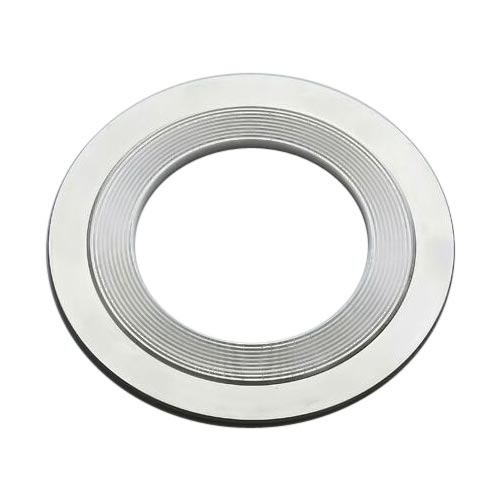Stainless Steel Spiral Wound Gaskets for High-Temperature Industries
In industrial settings marked by elevated temperatures and pressures, the utilization of stainless steel spiral wound gaskets has become increasingly prevalent. These gaskets, composed of a combination of stainless steel and filler materials like graphite or PTFE, employ a spiral winding pattern to establish a robust seal between flanges.

Temperature Range Determinants
The ability of stainless steel spiral wound gaskets to withstand high temperatures is contingent upon several factors. These include the type of stainless steel, the filler material employed, and the specifics of the application. Despite this variability, these gaskets generally exhibit impressive resilience across a wide temperature spectrum, making them versatile for deployment in diverse high-temperature scenarios.
1. Stainless Steel as a Resilient Material
Stainless steel's prominence in spiral wound gaskets is attributed to its exceptional resistance to corrosion, rendering it well-suited for harsh environments with chemical exposure or moisture. Notably, different grades of stainless steel possess unique properties and temperature tolerances.
Grades of Stainless Steel:
304 Stainless Steel: Suitable for temperatures up to 800 degrees Fahrenheit (427 degrees Celsius).
316 Stainless Steel: Capable of withstanding temperatures reaching 1500 degrees Fahrenheit (816 degrees Celsius).
2. Filler Material Influence
In addition to the stainless steel grade, the filler material plays a crucial role in determining the gasket's temperature range. For instance, graphite filler can endure temperatures up to 850 degrees Fahrenheit (454 degrees Celsius), while PTFE filler material boasts a tolerance limit of 500 degrees Fahrenheit (260 degrees Celsius).
3. Application-Specific Considerations
The specific application context significantly influences the gasket's temperature range. Environments with extreme temperatures or rapid fluctuations may necessitate alternative gasket types or the incorporation of supplementary materials like insulation or heat shields to prevent potential damage.
4. Additional Influencing Factors
The temperature range for spiral wound gaskets is also impacted by external factors such as applied pressure and flange characteristics. Higher pressures and rougher flange surfaces may constrict the gasket's temperature range.
Achieving the precise temperature range for a stainless steel spiral wound gasket demands a thorough consideration of all relevant factors in the specific application. Engineers, by adeptly selecting the appropriate combination of materials and accounting for unique application conditions, can craft gaskets that not only prevent leaks effectively but also endure the challenges posed by even the most demanding high-temperature environments.

Temperature Range Determinants
The ability of stainless steel spiral wound gaskets to withstand high temperatures is contingent upon several factors. These include the type of stainless steel, the filler material employed, and the specifics of the application. Despite this variability, these gaskets generally exhibit impressive resilience across a wide temperature spectrum, making them versatile for deployment in diverse high-temperature scenarios.
1. Stainless Steel as a Resilient Material
Stainless steel's prominence in spiral wound gaskets is attributed to its exceptional resistance to corrosion, rendering it well-suited for harsh environments with chemical exposure or moisture. Notably, different grades of stainless steel possess unique properties and temperature tolerances.
Grades of Stainless Steel:
304 Stainless Steel: Suitable for temperatures up to 800 degrees Fahrenheit (427 degrees Celsius).
316 Stainless Steel: Capable of withstanding temperatures reaching 1500 degrees Fahrenheit (816 degrees Celsius).
2. Filler Material Influence
In addition to the stainless steel grade, the filler material plays a crucial role in determining the gasket's temperature range. For instance, graphite filler can endure temperatures up to 850 degrees Fahrenheit (454 degrees Celsius), while PTFE filler material boasts a tolerance limit of 500 degrees Fahrenheit (260 degrees Celsius).
3. Application-Specific Considerations
The specific application context significantly influences the gasket's temperature range. Environments with extreme temperatures or rapid fluctuations may necessitate alternative gasket types or the incorporation of supplementary materials like insulation or heat shields to prevent potential damage.
4. Additional Influencing Factors
The temperature range for spiral wound gaskets is also impacted by external factors such as applied pressure and flange characteristics. Higher pressures and rougher flange surfaces may constrict the gasket's temperature range.
Achieving the precise temperature range for a stainless steel spiral wound gasket demands a thorough consideration of all relevant factors in the specific application. Engineers, by adeptly selecting the appropriate combination of materials and accounting for unique application conditions, can craft gaskets that not only prevent leaks effectively but also endure the challenges posed by even the most demanding high-temperature environments.

